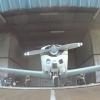Best RPM for Mooney 20 F
-
Members Online
- johnnyr172
- TCC
- ohdub
- Marc_B
- Ed de C.
- KLRDMD
- Hank
- BlueSky247
- Neshi
- LANCECASPER
- saltydecimator
- catchman86
- Lois
- jetdriven
- Gilt
- Crawfish
- Jim F
- YeloSub
- Buckeyechuck
- jamesyql
- EricJ
- Justin Schmidt
- Lax291
- Taz
- AndreiC
- Flyler
- aviatoreb
- 1967 427
- Skyland
- DXB
- Jetdriver
- jrwilson
- ToddCC22
- NewMoon
- 201Mooniac
- BrentS


Recommended Posts
Join the conversation
You can post now and register later. If you have an account, sign in now to post with your account.